This post may contain affiliate links. Please read my privacy policy.
Soft and puffy with beautiful brown blisters, this foolproof and easy naan bread recipe outshines even your favorite Indian restaurant's offerings. And the best part? You don't need a tandoor oven to make naan.
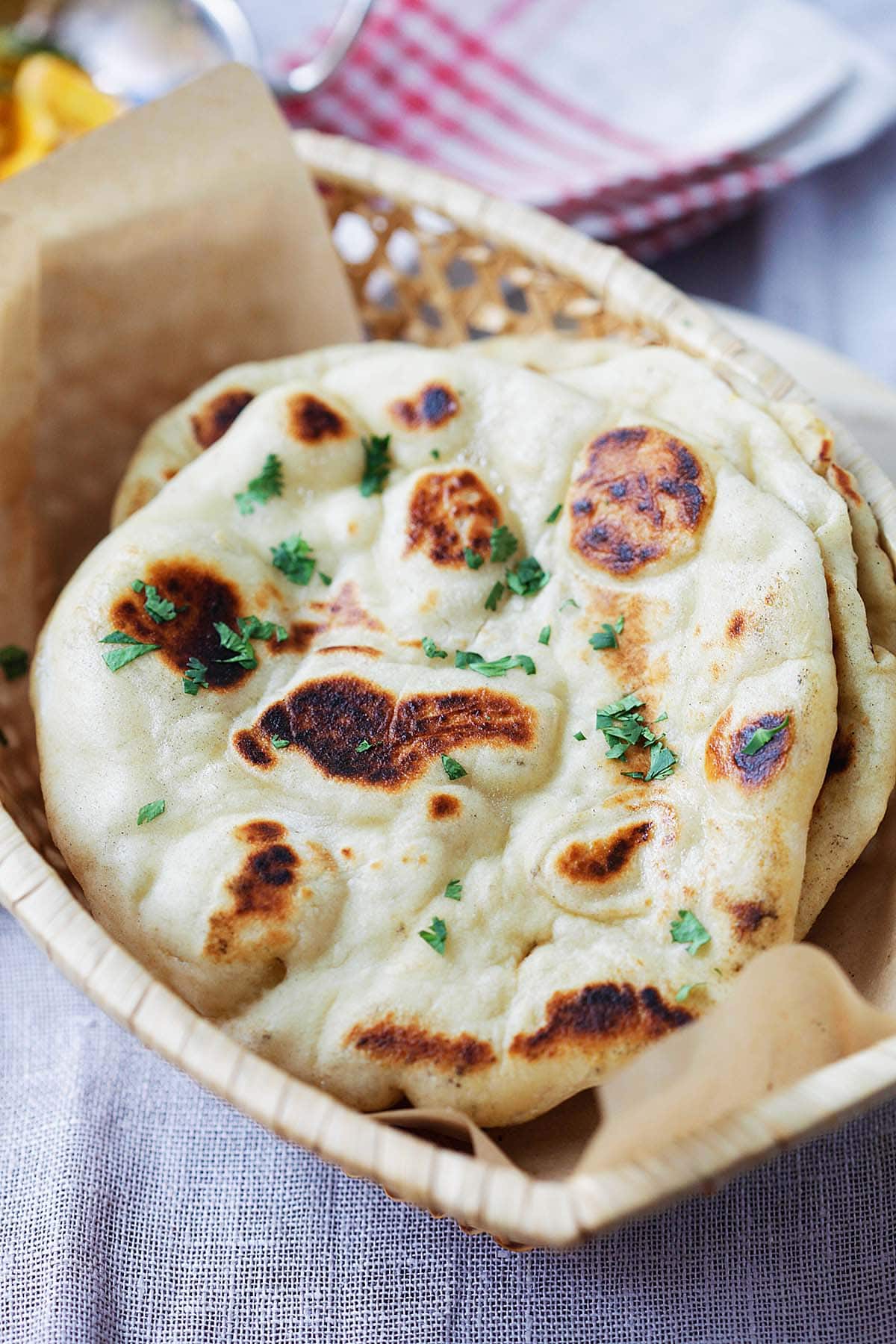
Table of Contents
- Soft & Fluffy Naan Bread
- What Is Naan
- Tandoor Oven
- What Goes Into Naan Bread
- Naan Bread Recipe Variations
- The Secret Ingredient For Naan: Yogurt
- How To Make Naan
- What To Eat With Naan Bread
- Helpful Tips For Home Cooks
- Frequently Asked Questions
- What To Serve With Naan
- Other Bread Recipes You Might Like
- Naan Bread (The Best Recipe!)
Soft & Fluffy Naan Bread
The traditional method of cooking naan in a hot clay tandoor oven with charcoal or wood fire is labor-intensive and requires skill and expertise, making it impractical for home kitchens. That’s why I’ve created this naan recipe for fluffy, chewy, buttery and bubbly naan bread, which is cooked in a hot cast-iron skillet, allowing you to enjoy it fresh and warm straight from your own kitchen.
Whether you’re dipping it in chicken curry or just enjoying it on its own, it does a great job of satisfying your Indian food cravings.
This recipe has proven to be highly effective, having been tried and tested by home cooks worldwide, all reporting great success in their kitchens. With over 1,500 votes and an average rating of 4.6, it stands as the easiest, best and most authentic naan recipe available online!
I have been using this recipe for a couple of years now. I’ve tried others, but I always come back to this one. It’s hands down the best. Thanks for such a fabulous recipe!
– Amanda
What Is Naan
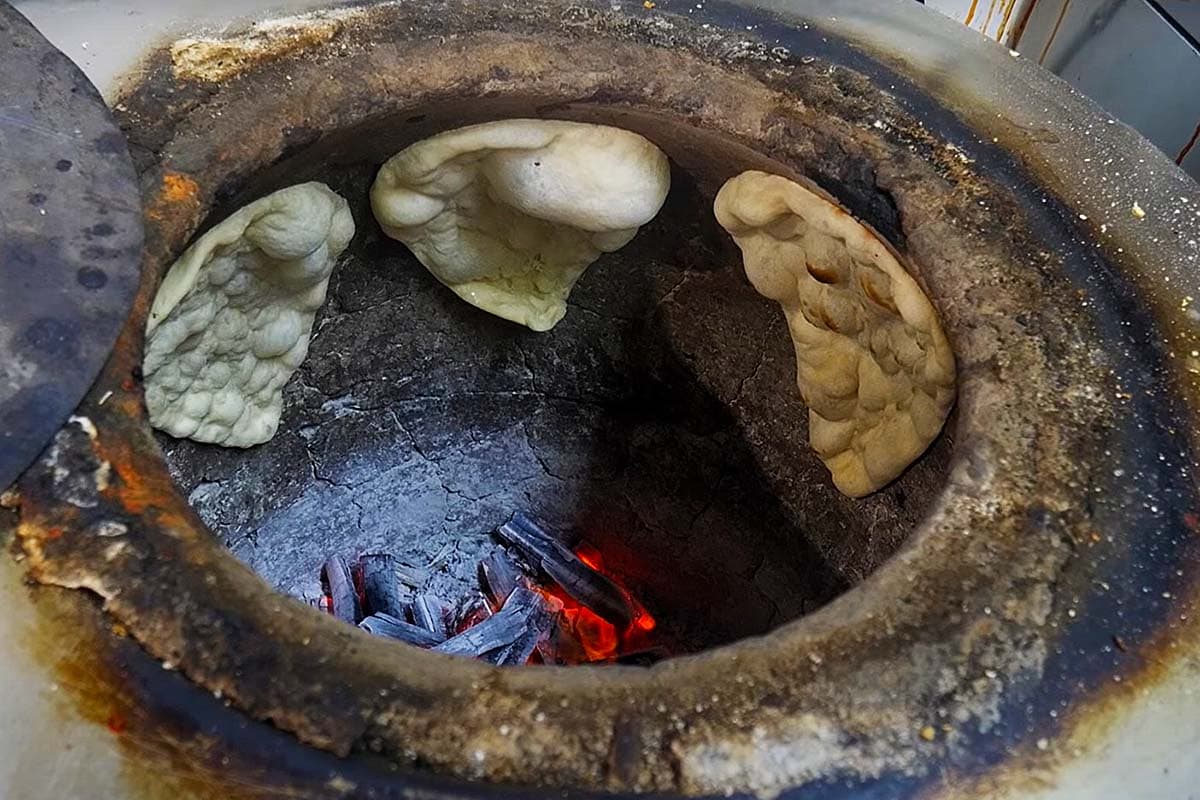
Naan is a type of flatbread staple in many South Asian and Middle Eastern countries. Although it’s associated with Indian cuisine, it actually originated in Persia (now known as Iran).
It is soft, doughy, fragrant and light, with gorgeous bubbly golden brown spots, perfect for mopping up sauces and curries such as Butter Chicken, Chicken Tikka Masala, curry chicken or squid curry. It’s one of those dishes that you should never skip when eating at an Indian restaurant.
Watch the video above on how is traditional naan made. The video was shot at an Indian restaurant.
Tandoor Oven
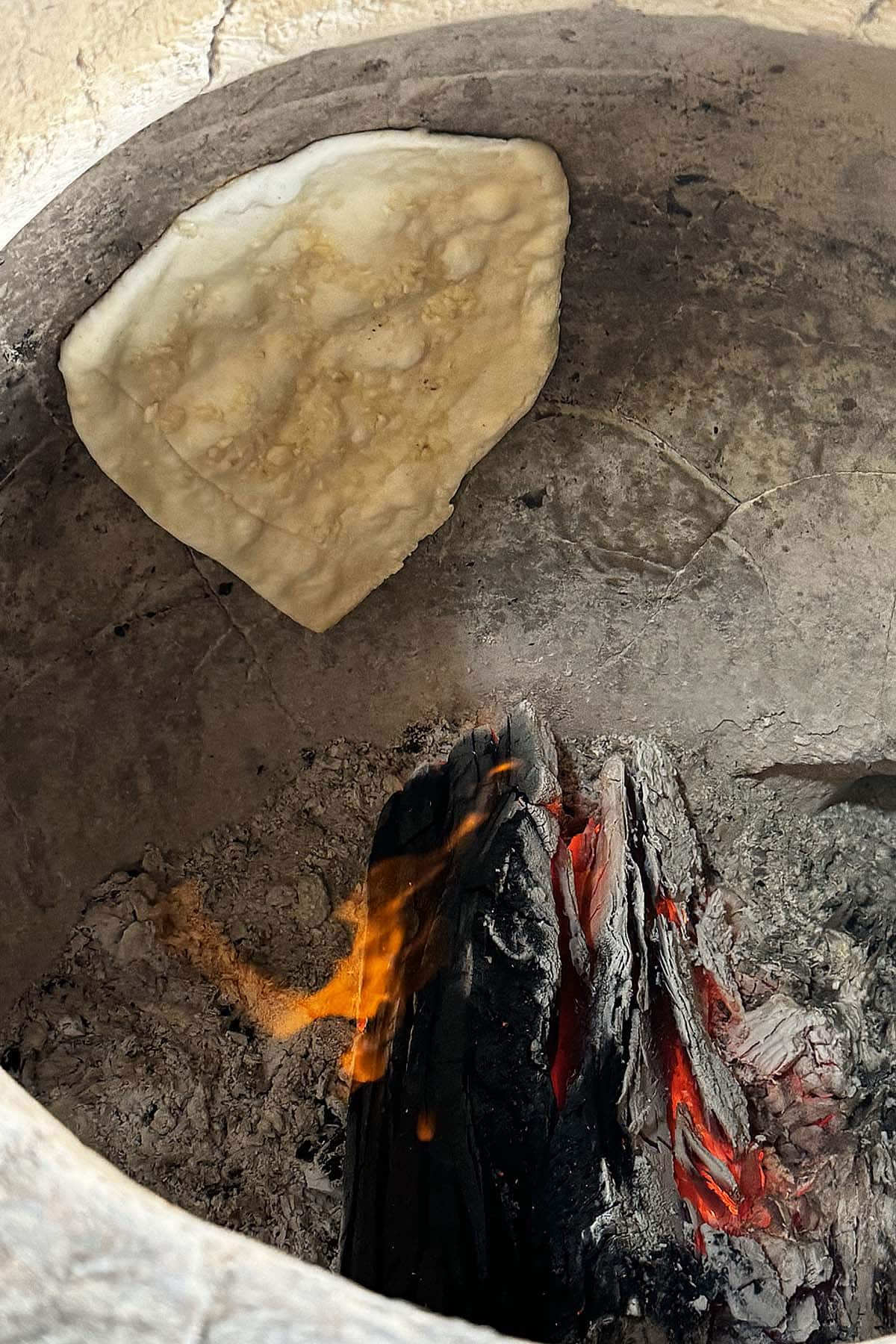
Naan is cooked in a special oven called a tandoor; tandoor oven is usually made of clay or metal and has been used for ages in places like Central Asia, South Asia, and the Middle East. Traditional tandoor ovens use charcoal or wood fire, it is super hot, reaching up to 900°F (482°C), adding a unique smoky flavor to the naan. So, the high heat and quick cooking process in the tandoor oven are what make naan so delicious and distinctive.
One of the defining characteristics of naan bread is its charred appearance. To achieve this, naan dough is slapped against the hot walls of the tandoor oven (see picture above) using a cushioned pad or by hand. This rapid contact with the intense heat creates those characteristic charred and bubbly spots on the surface of the naan. The intense heat cooks the naan quickly and creates air pockets inside the flatbread, making it soft, airy and chewy all at once.
Now, how can you replicate the effect of a tandoor oven at home? You use a very hot cast-iron skillet, which can reach up to 650°F (343°C) with almost any heat source, making it an excellent appliance for making fluffy naan at home!
Appliance Tip: I used a 12-inch Lodge Cast Iron Skillet. It’s a traditional US brand, durable, budget-friendly, and pre-seasoned with 100% natural vegetable oil. It offers unparalleled heat retention and even heating. You may also use Staub Cast Iron Skillet, which is French made with a much higher price point.
What Goes Into Naan Bread
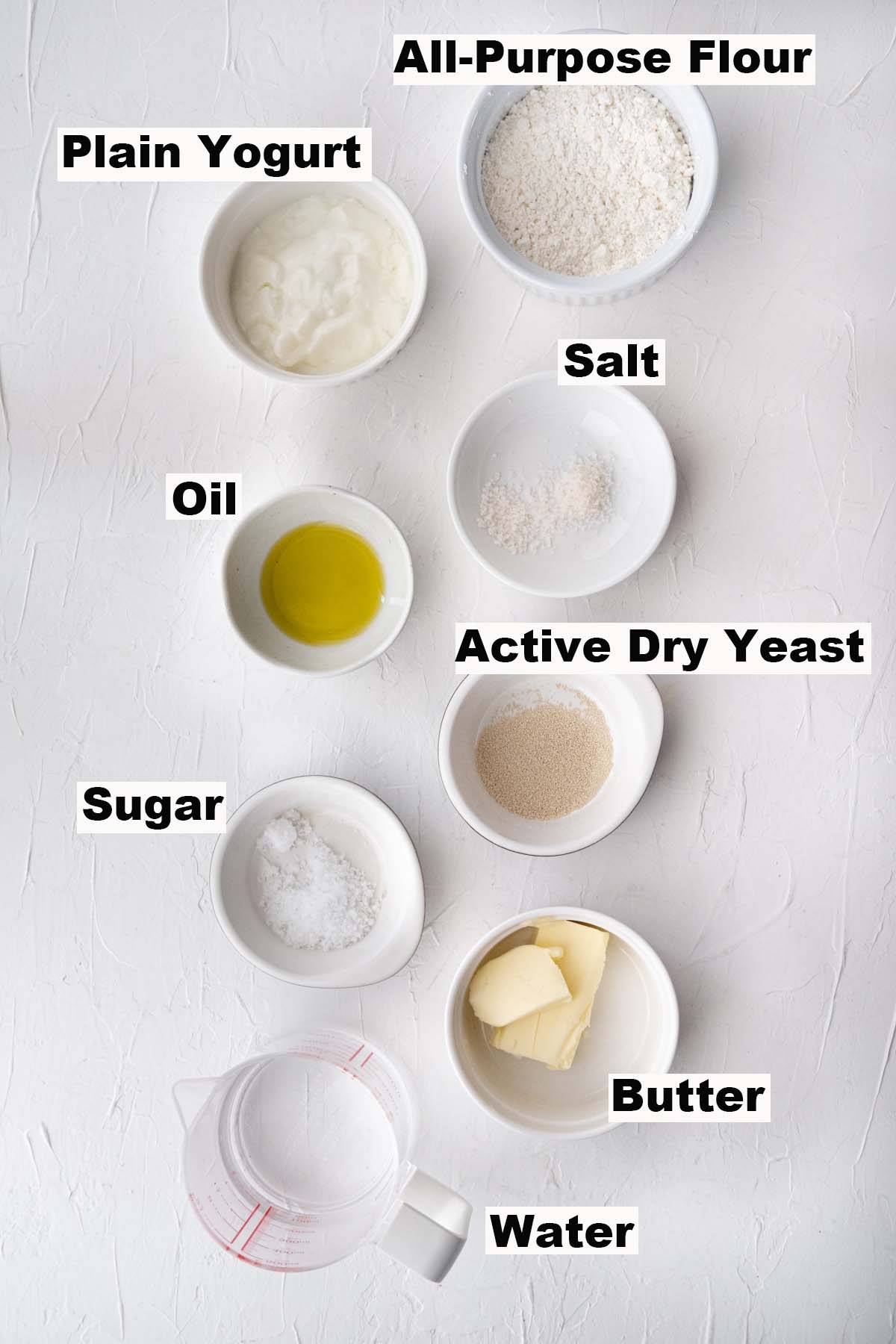
Different countries have their own versions of this flatbread. But the basic ingredients remain the same: all-purpose flour, water, and yeast. In some cases, people add plain yogurt, ghee, milk, or egg for extra texture and flavor. Here are the list of ingredients used in my easy homemade naan recipe:
- all-purpose flour – gives the bread its structure. Depending on the humidity in your kitchen, you might need more or less flour to make a smooth and elastic dough.
- yeast – helps the dough rise to get a nice, fluffy texture. I’m using active dry yeast in this recipe, but you can also use instant yeast.
- warm water and sugar – these two ingredients are crucial to activate the yeast.
- plain yogurt – the secret ingredient in this cast iron naan recipe. It keeps the dough soft and moist while adding a hint of tanginess to the bread.
See the recipe card for full information on ingredients.
Naan Bread Recipe Variations
This flatbread offers endless possibilities to keep your taste buds excited. From savory garlic naan to the irresistible cheesy garlic naan, there’s always something new to try and enjoy.
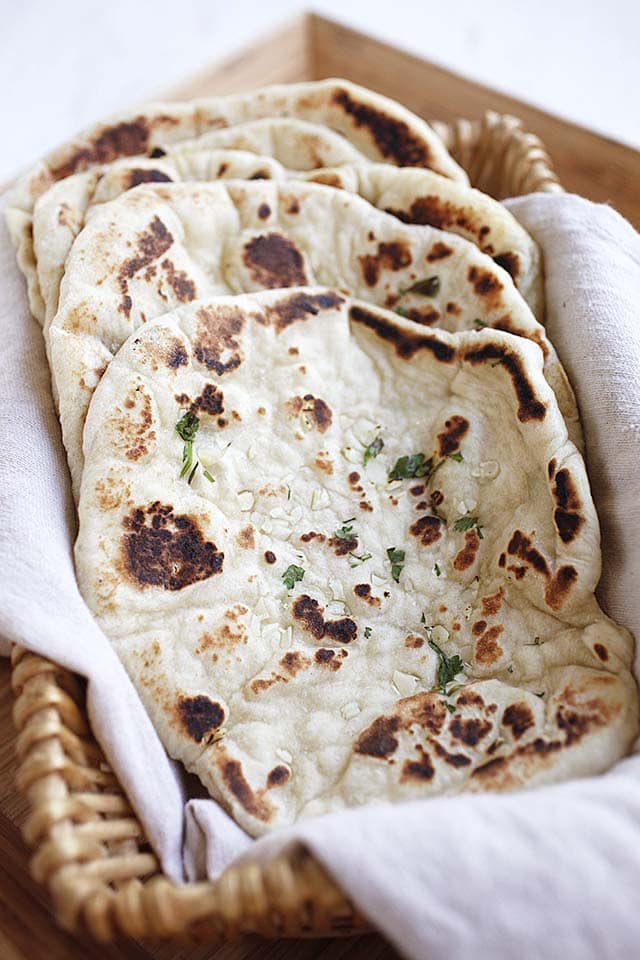
My garlic naan recipe has minced garlic and chopped cilantro on the dough, lending a garlicky flavor to the flat bread.
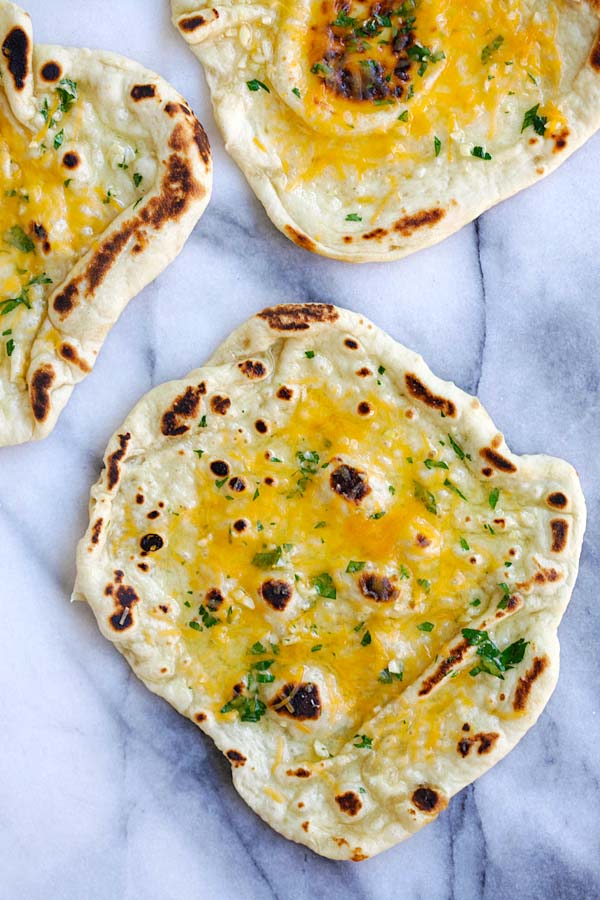
Cheesy garlic naan is topped with melted cheese like cheddar cheese (or mozzarella cheese) for a cheesy treat.
Both variations offer a tasty twist on the classic recipe. They can be enjoyed alongside various Indian dishes or enjoyed on their own as a snack or appetizer.
The Secret Ingredient For Naan: Yogurt
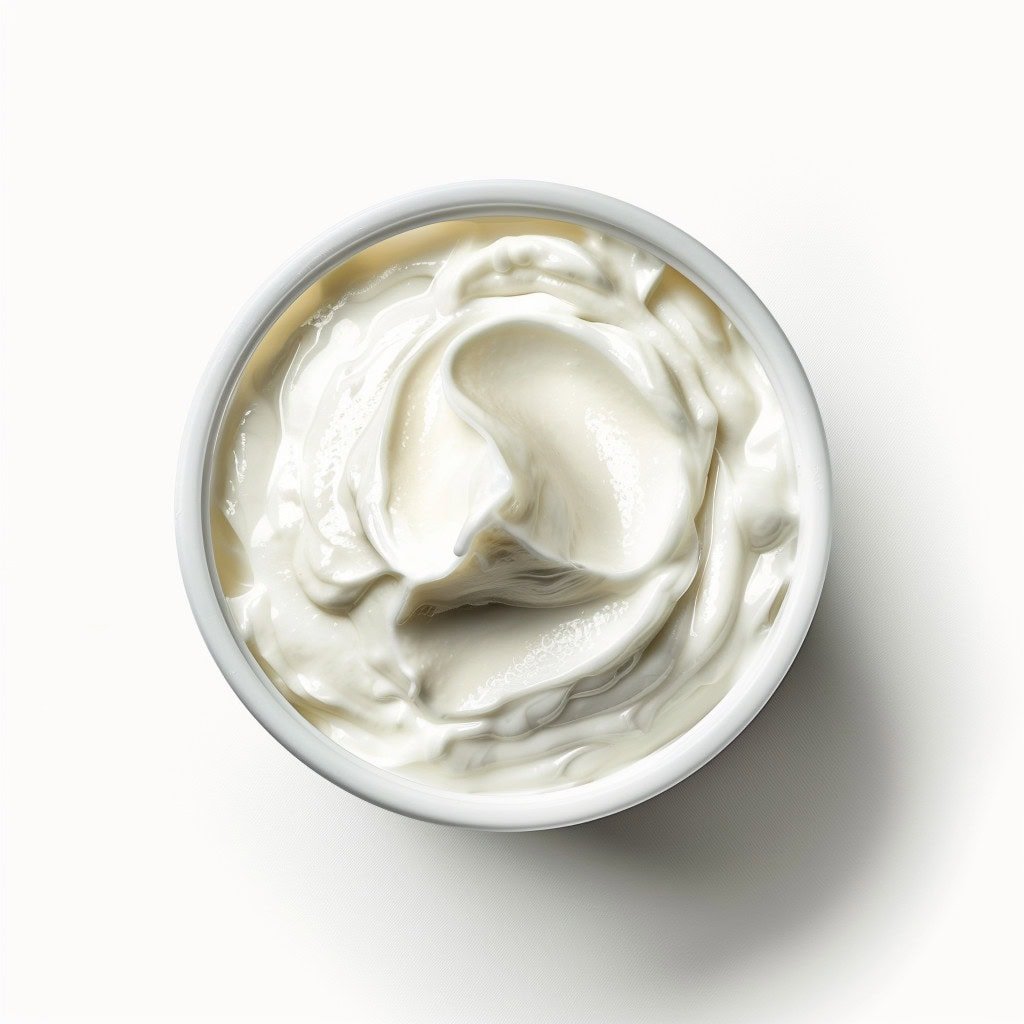
Yogurt is the secret ingredient in my recipe. Some naan bread recipes have no yogurt, but let me tell you why you cannot do without yogurt.
- Yogurt helps in the leavening process, adding moisture and tenderness to the dough, making sure that the end result is super soft and fluffy texture that we all love!
- Yogurt lends a creamy and slightly acidic flavor to the dough, adding mild tangy flavors to the bread.
- Yogurt also imparts a tint of sweetness, which makes the finished bread tastier.
Plain Yogurt Versus Greek Yogurt
Both plain yogurt and Greek yogurt work well for making naan bread at home. Greek yogurt may result in a denser texture due to its higher protein content and lower moisture content.
Plain yogurt certainly produces softer, fluffier naan. Ultimately what you use depends on your personal preference, dietary needs and availability.
If you like chewy and denser naan, use Greek yogurt. If you prefer pillow soft texture, opt for plain yogurt.
How To Make Naan
Unlike a traditional naan recipe, I only used a hot cast-iron skillet in my recipe. And trust me, making naan at home is easier than you think!
It turned out delicious, soft, and puffy with beautiful golden brown spots and blisters on the surface. It’s super close to an authentic naan that you get in Indian restaurants.
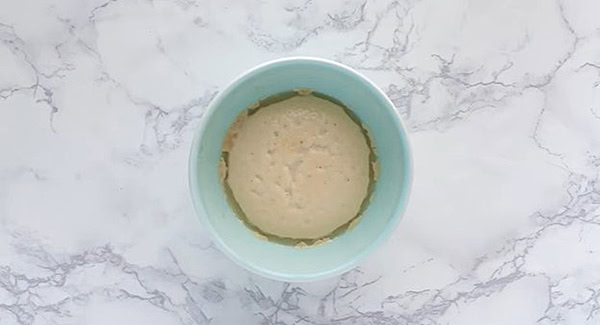
Step 1: Activate Yeast. In a small bowl, add the sugar, warm water, and yeast together. Stir to combine well. The yeast should be activated when it becomes foamy, about 10 minutes. Transfer the flour to a flat surface and make a well in the middle.
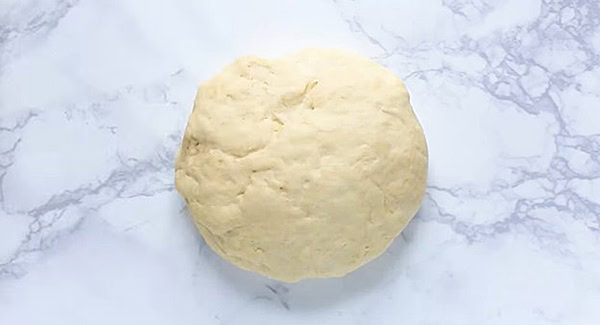
Step 2: Making Naan Dough. Add the yeast mixture, yogurt, salt, and oil, and knead the dough until the surface becomes smooth and shiny, about 10 minutes. Cover the dough with a damp cloth and let it rise in a warm place (for example: beside the stove top or warm oven). The dough should double in size in about 1 hour.
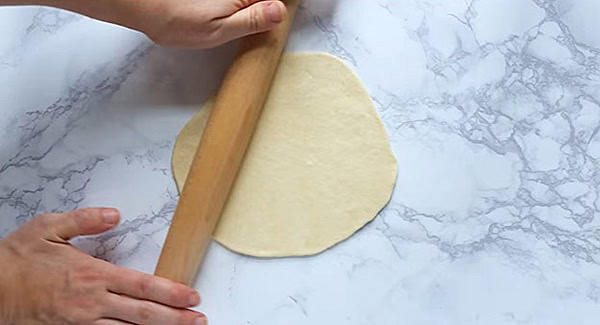
Step 3: Rolling Naan Bread. Divide the dough into 8 equal portions. Roll the dough to an 8” (230g) circle using a rolling pin.
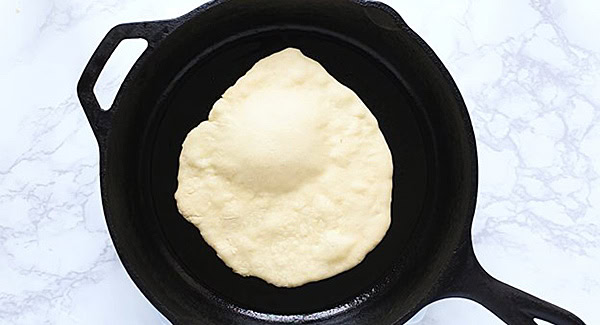
Step 4: Cooking Naan Bread. Heat up a skillet (cast-iron preferred) over high heat and lightly grease the surface with some oil to avoid the dough from sticking to the skillet. Place the dough on the skillet. When it puffs up and bubbles, and burnt spots appear, flip it over and cook the other side. Repeat the same until all the dough is done.
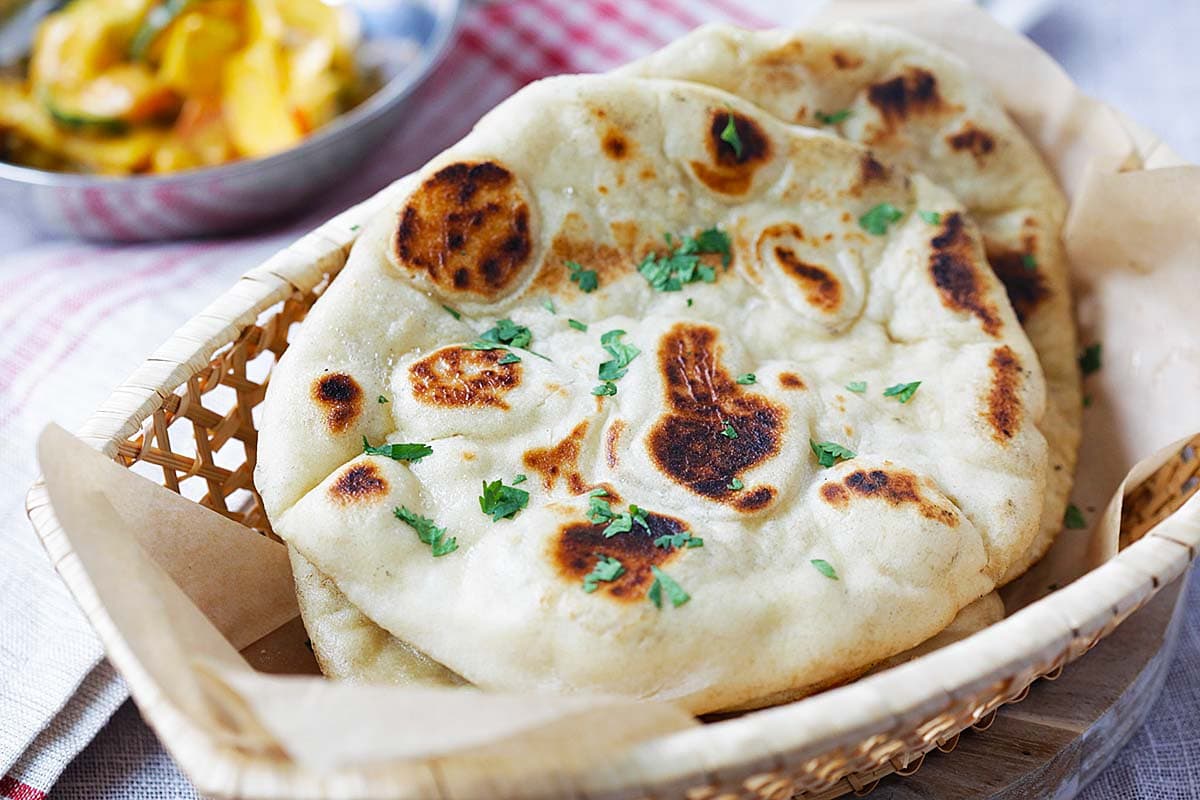
Step 5: Brush cooked naan with melted butter or ghee, and serve warm.
Kneading Technique
Proper kneading is crucial for developing gluten, which gives the dough its elasticity. Knead the dough thoroughly using a folding and pressing motion until it becomes smooth and elastic. This typically takes about 8-10 minutes by hand or 5-7 minutes with a stand mixer fitted with a dough hook. You cannot make good bread without kneading; this is an age-old tradition passed down from generation to generation.
Pro Tip: You absolutely do not need ghee in naan dough. Recipes that include ghee in the ingredient list are not traditional and can be considered a culinary misstep. Naan and other flatbreads do not require additional fats like ghee to achieve their desired texture and flavor.
What To Eat With Naan Bread
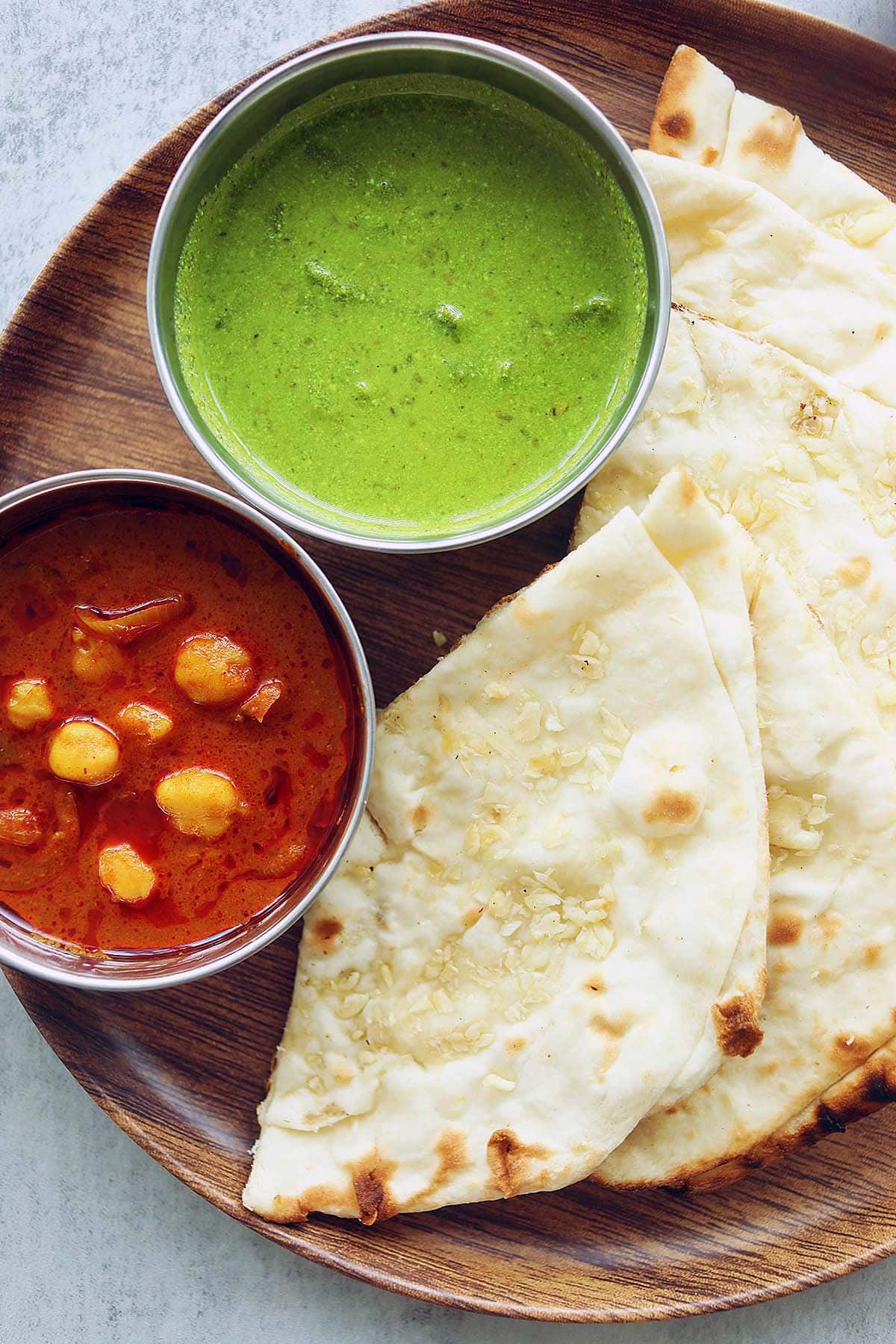
Serving naan with chana masala and mint chutney is a common and delicious combination in Indian cuisine. The soft and fluffy naan pairs perfectly with the rich, spiced chickpea curry of chana masala, while the mint chutney adds a fresh, tangy contrast to the flavors. This chutney also serves as a refreshing dip.
Together, they create a well-balanced and flavorful meal that is widely enjoyed in India. This combination is not only delicious but is also one of the most traditional and authentic ways to enjoy naan bread. The trio can be served in various settings, from casual family dinners to elegant gatherings. It can be paired with other Indian dishes or enjoyed on its own as an affordable complete meal that is packed with flavors and nutrition.
Helpful Tips For Home Cooks
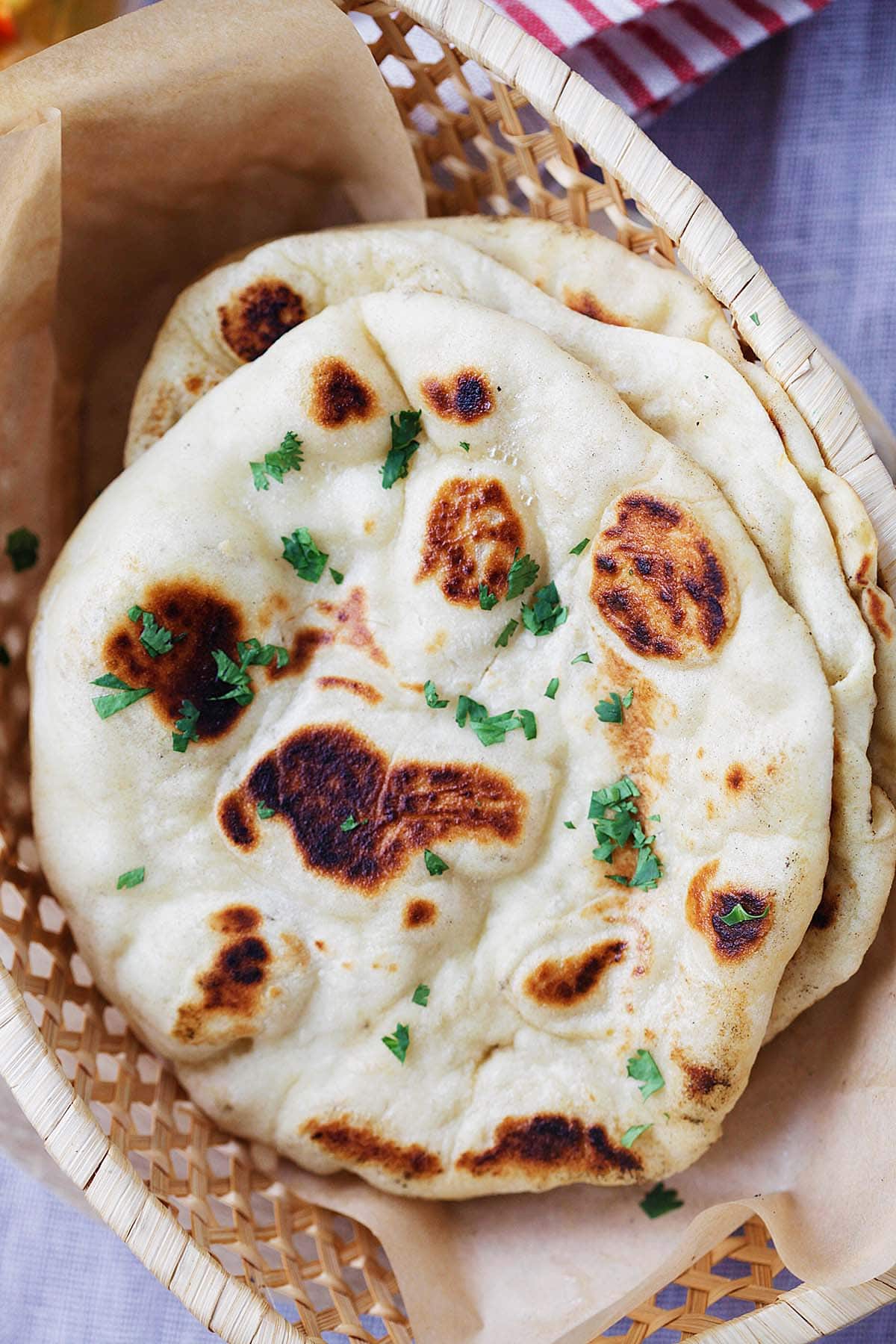
Here are some helpful tips for making delicious and fail-proof naan bread at home, every time!
- The dough is sensitive to climate and temperature variations. If your naan dough is sticky, add 2 more tablespoons of flour to bind the dough. Likewise, in dry climates, you may need to add more water to the dough to prevent it from drying out too quickly.
- Knead the dough with your hands until it becomes smooth and elastic, or use a stand mixer to speed up the process. Then, let it rest until it doubles in size. Please take note that in warmer climates, naan dough may rise faster due to more active yeast, while in cooler climates, it may take longer to rise.
- Make sure to use a very hot skillet to cook the flatbread. The high heat puffs up the bread for that iconic airy appearance. It’s done when burnt brown “blisters” or spots appear (see photo above). In hotter climates or kitchens, it may cook faster due to higher temperature, leading to quicker browning and potential charring.
- Brush the fresh-off-the-skillet bread with some melted salted butter or ghee, and top them with fresh cilantro.
Simply put, climate and temperature may affect this simple naan bread recipe. For the best results, please adjust your naan-making process accordingly. Enjoy!
Frequently Asked Questions
No, you absolutely do not need ghee in naan dough. Any recipes that call for ghee in the ingredient list is a culinary sin. Traditional flat bread is light and dry, and not soaked in oil and fat. You’re not making Indian Roti Paratha. However, you can brush melted ghee over warm naan bread just before serving.
Both are popular Indian flatbreads, but they are made with different ingredients. Hence, they also have distinct textures. Plain naan bread is made with all-purpose flour, yeast, and yogurt, giving it a soft and pillowy texture. Roti or chapati, on the other hand, is an unleavened bread made only with whole wheat flour and water, making it tender yet slightly flaky like a flour tortilla. Traditional naan bread is also cooked in a tandoor oven, while roti is typically heated in a flat pan, skillet, or griddle called tawa or tava.
Some recipes use eggs, but this easy recipe doesn’t contain eggs. If you are allergic to eggs, fret not, you can try my recipe!
Yes, you can. My recipe calls for active dry yeast but instant yeast can often be used interchangeably. If you use instant yeast, cut the amount to 2 teaspoons.
Yes, you can absolutely use bread flour, which has a higher gluten content, making the flatbread slightly more chewy. You can also mix all-purpose flour with bread flour.
Yes, you can make gluten-free bread using alternative flours such as rice flour, almond flour, or a gluten-free flour blend. However, the texture and flavor will be different.
Yes, naan bread can be a healthy option as it is typically made with simple ingredients. My authentic naan bread recipe is quick, easy, and fail-proof! The best part is that you only need a cast-iron skillet to make your own at home.
Yes, you can freeze naan bread. Wrap it tightly with plastic wrap or a sheet of heavy aluminum foil, or place it in a freezer-safe sealable plastic bag or container before freezing. When you’re ready to eat it, thaw it in the refrigerator overnight or at room temperature, then reheat it in the oven or microwave for 10-20 seconds before serving.
No, it is a type of leavened bread that is typically thicker and fluffier than a tortilla. Tortilla tends to be thinner and more pliable.
Yes, naan bread makes a great pizza crust. Divide the dough into four portions, roll out the dough balls to a thicker bread, then add your favorite pizza toppings to make homemade pizza, for example: chicken tikka masala pizza.
Absolutely! You can make the dough ahead of time and freeze it. Per my recipe, divide the dough into eight (8) portions and shape them into balls. Flatten the balls, then wrap each one individually with plastic wrap before freezing. When you’re ready to use the dough, thaw it in the refrigerator overnight or at room temperature for a few hours until the dough soften. Roll out the dough balls on a flour surface and cook on a hot cast-iron skillet per the recipe.
There are three (3) simple ways to reheat naan bread: in the oven, on the stovetop, and in the microwave. You can reheat in the oven at 350°F (175°C) for 5 minutes. Alternatively, you can heat it on the stovetop over medium heat, cooking both sides of the bread. Finally, you can reheat in the microwave for 15-30 seconds by covering the bread with a damp cloth or paper towel.
Each serving is only 195 calories.
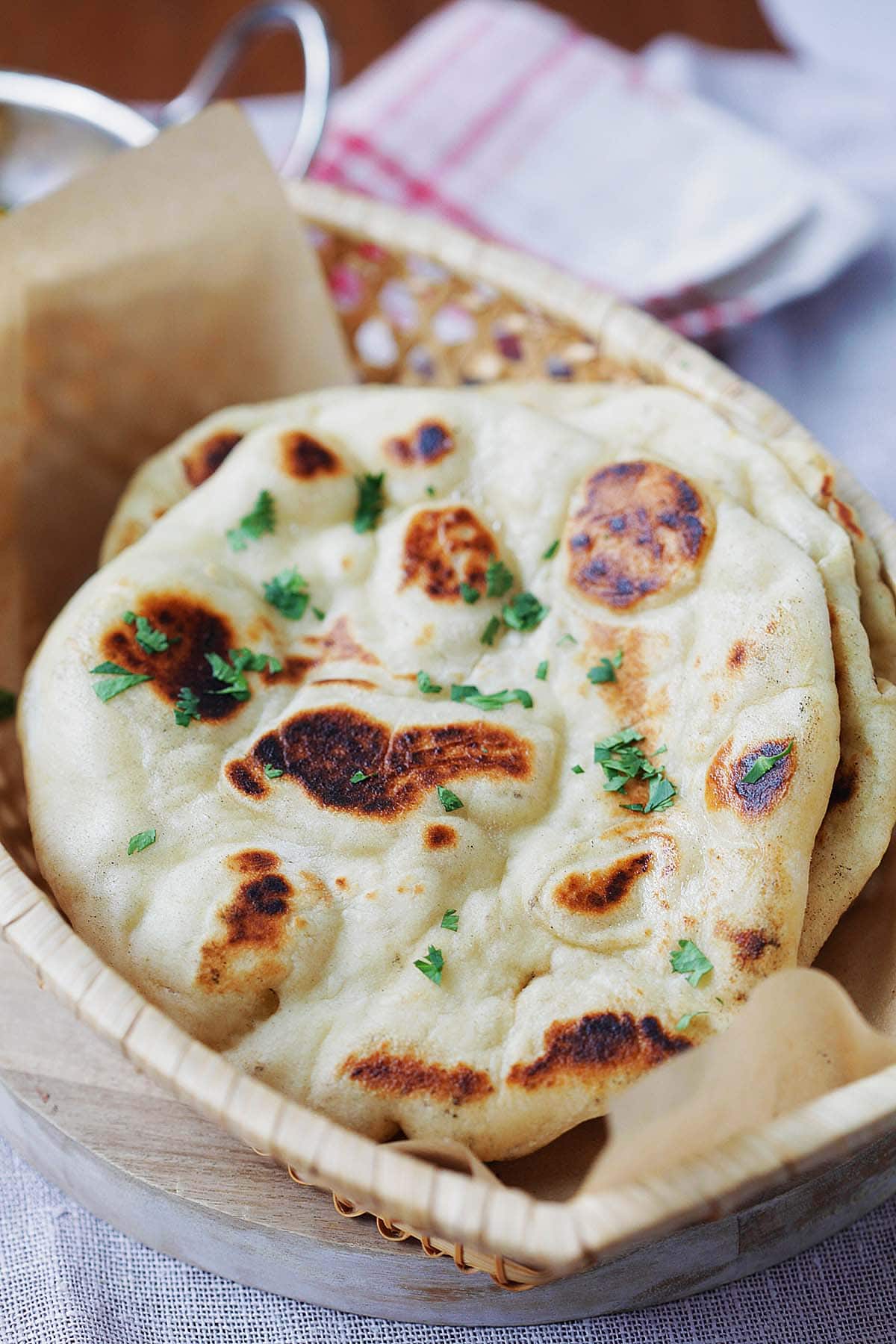
What To Serve With Naan
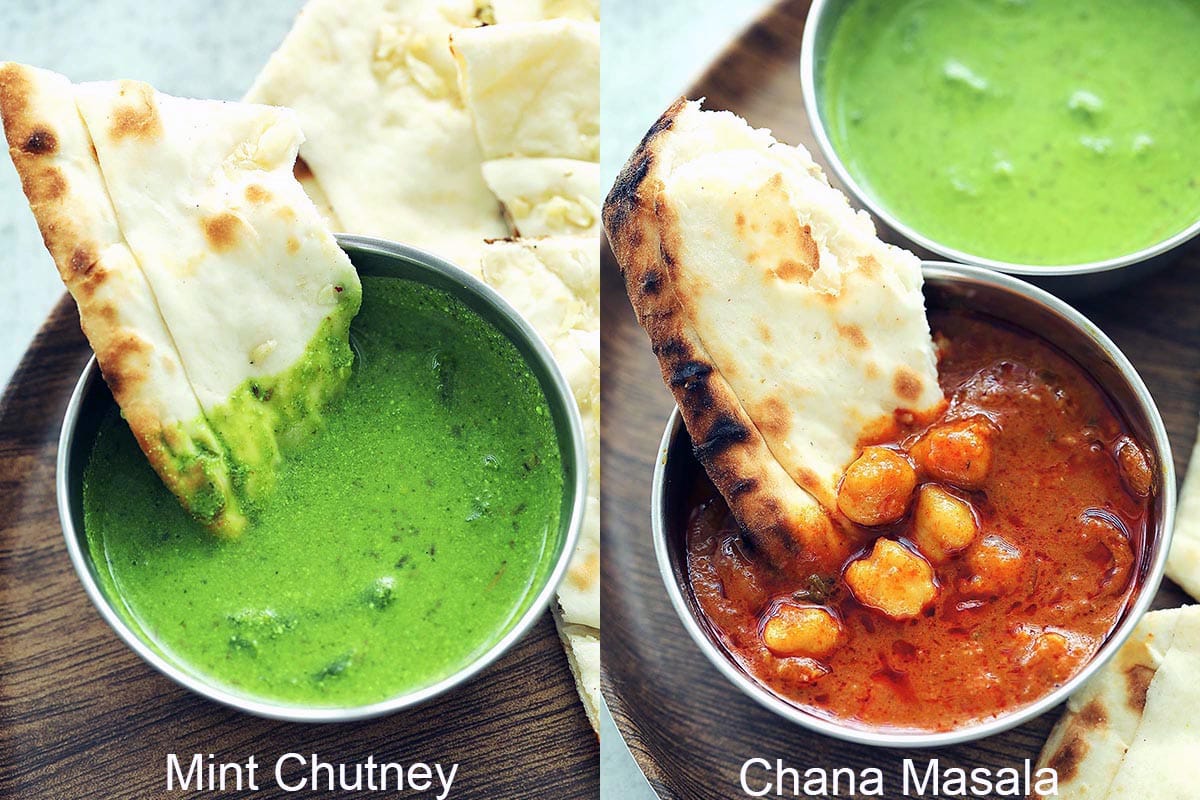
Naan bread is great with Indian curries and sauces like Butter Chicken and Chicken Tikka Masala. It’s also great with vibrant green-color mint chutney dip or chana masala, as pictured above. For a wholesome Indian dinner, I recommend the following recipes:
I hope you enjoy this post as much as I do. If you try my recipe, please leave a comment and consider giving it a 5-star rating. For more easy and delicious recipes, explore my Recipe Index, and stay updated by subscribing to my newsletter and following me on Facebook, Pinterest, and Instagram for new updates.
Other Bread Recipes You Might Like
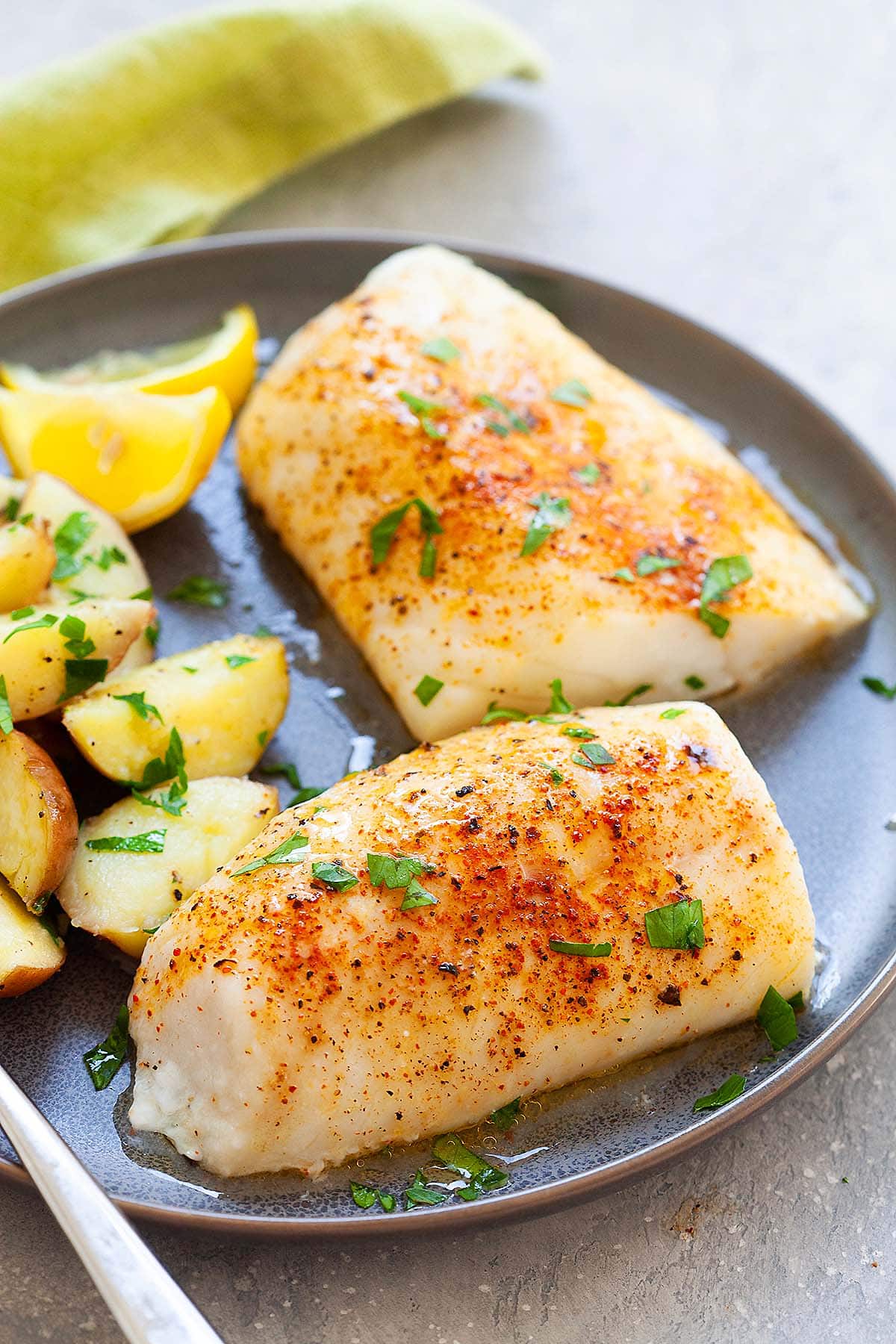
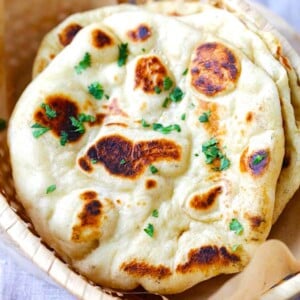
Naan (The Best Recipe!)
Ingredients
- 1 teaspoon sugar
- 1/2 cup warm water
- 1/4 oz. (10g) active dry yeast , 2 1/4 teaspoons
- 2 1/4 cups all-purpose flour
- 1/2 cup plain yogurt
- 1 teaspoon salt
- 1 tablespoon oil
- some oil , for greasing the skillet
- 3 tablespoons melted butter , or ghee
Instructions
- Activate Yeast. In a small bowl, add the sugar, warm water, and yeast together. Stir to combine well. The yeast should be activated when it becomes foamy, about 10 minutes. Transfer the flour to a flat surface and make a well in the middle.
- Making Naan Dough. Add the yeast mixture, yogurt, salt, and oil, and knead the dough until the surface becomes smooth and shiny, about 10 minutes. Cover the dough with a damp cloth and let it rise in a warm place (for example: beside the stove top or warm oven). The dough should double in size in about 1 hour.
- Rolling Naan Bread. Divide the dough into 8 equal portions. Roll the dough to an 8” (20 cm) circle using a rolling pin.
- Cooking Naan Bread. Heat up a skillet (cast-iron preferred) over high heat and lightly grease the surface with some oil to avoid the dough from sticking to the skillet. Place the dough on the skillet. When it puffs up and bubbles, and burnt spots appear, flip it over and cook the other side. Repeat the same until all the dough is done. Brush with melted butter, and serve warm.
- Brush cooked naan with melted butter or ghee, and serve warm.
Video
Notes
- The dough is sensitive to climate and temperature variations. If your naan dough is sticky, add 2 more tablespoons of flour to bind the dough. Likewise, in dry climates, you may need to add more water to the dough to prevent it from drying out too quickly.
- Knead the dough with your hands until it becomes smooth and elastic, or use a stand mixer to speed up the process. Then, let it rest until it doubles in size. Please take note that in warmer climates, naan dough may rise faster due to more active yeast, while in cooler climates, it may take longer to rise.
- Make sure to use a very hot skillet to cook the flatbread. The high heat puffs up the bread for that iconic airy appearance. It’s done when burnt brown “blisters” or spots appear (see photo above). In hotter climates or kitchens, it may cook faster due to higher temperature, leading to quicker browning and potential charring.
- Brush the fresh-off-the-skillet bread with some melted salted butter or ghee, and top them with fresh cilantro.
Nutrition
Nutrition information is automatically calculated, so should only be used as an approximation.
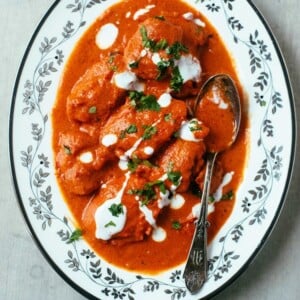
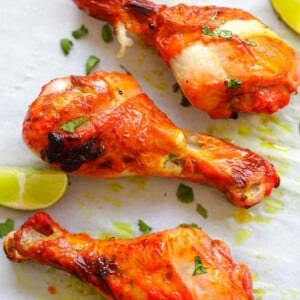
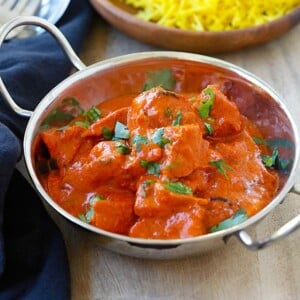







To reheat naan just pop it in the toaster. If it comes out dryer than you like just sprinkle on some water before toasting.
Thanks for your suggestion! :)
I love love this recipe! Was windy though how well it would work if I made the dough the night before cooking it? Would I make the dough, let it rise and hour, divide into 8 balls, refrigerate and then take them out and let get to room temperature before cooking? Thanks!
Hi Morgan, thanks for the 5 stars rating and thanks for your comment! :) Yes, you can do that. Let me know how it goes! :)
that works to make dough day before but don’t refrigerate. dough is fine left on the bench or in a proving box.